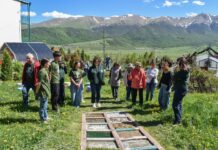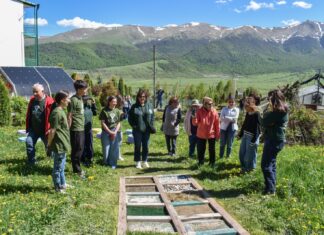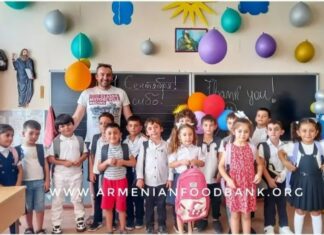YEREVAN/BERLIN — In the first presidential visit between the two nations, German President Frank-Walter Steinmeier arrived with his wife, Elke Büdenbender, on March 30 in Yerevan. Although a German president is not the policy-maker and his office is considered ceremonial, the visit promised to be more than a gesture of protocol. Their schedule over two days included substantive talks in Yerevan with Steinmeier’s counterpart, Armenian President Vahagn Khachaturyan, as well as with Prime Minister Nikol Pashinyan, and travel to other cities for meetings with representatives of Armenian industry, culture, and church.
The Steinmeiers began their tour with a visit on Monday, March 31, to the Tsitsernakaberd memorial, where they laid wreaths in memory of the victims of the genocide against the Armenians.
A delegation of UNICEF accompanied Germany’s First Lady to the Children’s Center of the Fund for Armenian Relief. FAR, a leading humanitarian aid organization founded after the 1988 earthquake disaster in Armenia, has continued to provide aid to families, children in need, local enterprises, educational institutions and much more. The purpose of her visit was to learn more about the newly introduced Barnahus model for abused children, meet with displaced individuals from Artsakh (Nagorno-Karabakh), and gain insights from the social workers.

Frank-Walter Steinmeier was then received with military honors by his Armenian counterpart President Vahagn Khachaturyan, after which the two held official talks and a joint press conference. Steinmeier expressed Germany’s support for Armenia’s desire to develop relations with the European Union. Recently a large majority in the Armenian parliament voted in a third reading for a bill in favor of initiating the process of EU membership.
“Germany,” said Steinmeier, “would like to make its contribution toward Armenia’s success in this direction,” adding that “the ambitious reform program of the Armenian government would certainly be required.” Although the country does not yet have candidate status, Khachaturyan stated, “We simply want to become a member of the European Union.” He went on to assure his guest, “I do not believe that you will find one single person in Armenia who would be opposed.”
On the platform formerly known as Twitter, Khachaturyan, expressing his “great pleasure to host Steinmeier” on his first visit, reported that they had “open and productive discussions in an atmosphere of full confidence” on their bilateral agenda, which included sector cooperation, “security issues and current challenges,” further expansion of their partnership “including within the AM-EU framework.”











